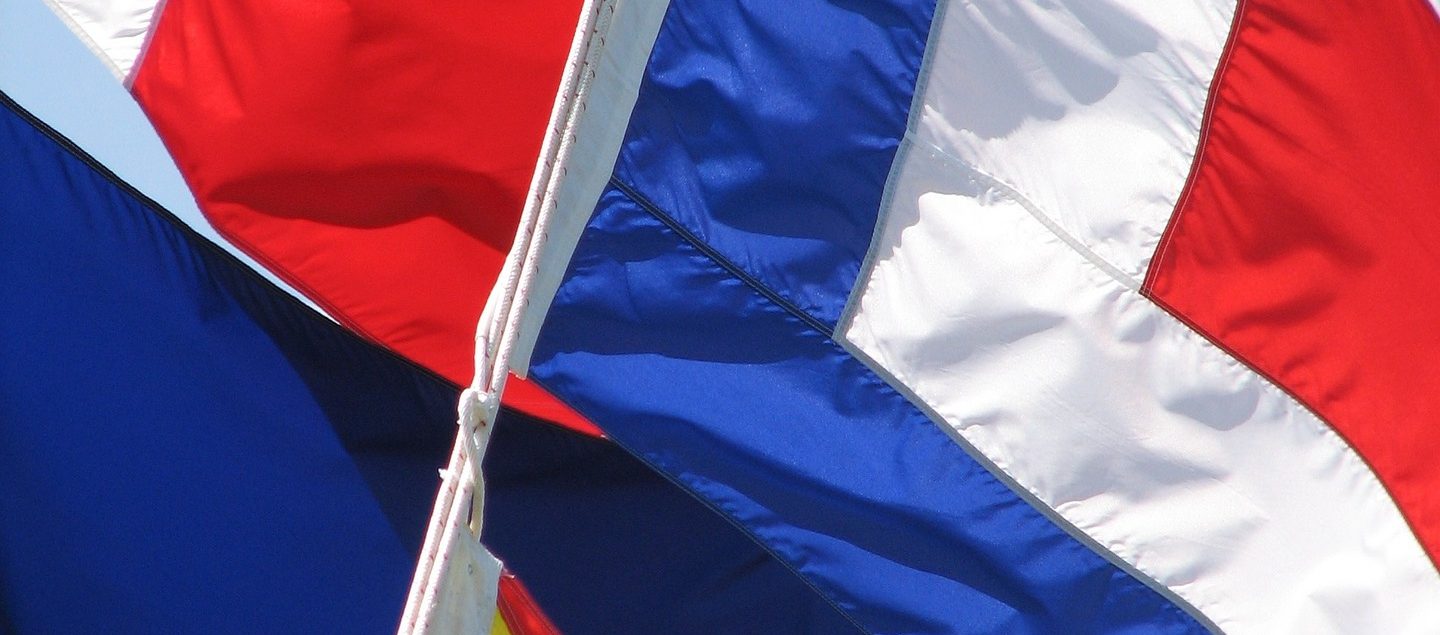International Nautical Code: the meanings of flags
The flag is first of all a symbol, in the case of national flags, of belonging, of history and of origins.
National ones, however, do not exhaust the function of flags as such which, in other areas and contexts, take on real meanings, even before symbolic values, thus showing themselves as full-fledging means of communication.
In many cases, in fact, the real primary function of a flag is to signal, to transmit a message, because through the use of flags it is possible to create universal modes of communication that break down language barriers between countries and people.
One of the most important and ancient examples of the use of flags as a communication tool is undoubtedly the International Nautical Code.
First published in 1855 by the British Board of Trade and reviewed numerous times over time, including the most important revision in 1932, the International Nautical Code is a coding system that, through the use of specific flags, allows signals and communications between ships or between ships and land structures.
The International Nautical Code is extremely important in the world of navigation because thanks to precise rules for the use of the flags that compose it, it allows a simple and immediate communication, but at the same time exhaustive in messages that can be conveyed.
Thanks to an internationally distributed nautical code, the obstacle of understanding the language is overcome, through an “alphabet” common and understandable to all.
Which are the nautical flags of the International Code?
The International Nautical Code is a real alphabet of the nautical world, a language that, like all others, has its own symbols (in this case flags), each of which with its own meaning, has its own rules and has its own “punctuation”.
According to the International Nautical Code, in fact, each flag can symbolize a letter, a number or it can enclose the meaning of entire standard messages. In addition to being used individually, nautical flags are often used together, just as they do with the letters of the alphabet, thus creating a universe of possibilities with regard to the messages to be conveyed.
The flags of the International Nautical Code are in all 40 and can be divided as follows:
- 26 Flags indicating the letters of the NATO phonetic alphabet. Each individual flag may indicate the letter it represents or certain reports associated with it.
- 10 Numerical flags that each individually indicate a digit (0 to 9).
- 1 Intelligence Flag: a particular flag that has the special function of being a “punctuation”, in cases of complex signals. This special flag can in fact be used to separate a full and decimal part of a number, in a communication in which information containing digits is created, but is also used, before the message, to confirm receipt of a report and to indicate that you are responding to that communication. Finally, when used by the transmitter, it indicates the end of the message.
- 3 repeating flags that are used associated with other flags and allow you to replicate a specific letter of the message (identified by the serial number of the repeating flag used, e.g. 1st Repeater Flag = Repetition of the first letter)
Of the first 26 nautical flags, perhaps some may be more familiar than others, such as the A – Alpha which is used frequently and indicates the presence of a diver at sea, or the U – Uniform which generically indicates a danger in the place where the ship is heading.
Other nautical flags, on the other hand, change the meaning of their message, depending on where and by whom they are hoisted. This is the case of L-Lima, recently also seen in some news reports, which when hoisted in port indicates that the ship is under quarantine, while when exposed at sea indicates an “alt” signal that invites to stop the ship.
International Nautical Code: how to use flags
When hoisted, nautical flags must be read from the first at the top, sliding downwards, deciphering the meaning of individual flags, taking into account variations made by any repeating flags and thus interpreting the full message of the signal.
However, there are several methods of using nautical flags which can be summarized as follows:
- Each flag indicates a single character, thus forming messages of meaning accomplished by reading the set of characters. However, this method is little used, because it involves the use of many flags even for short reports.
- Each flag has a specific meaning and is used to convey the message associated with it. In these cases, flags can be used individually or associated with other flags to process new alerts. For example, you can associate two signal flags for more complex communications, or you can associate a signal flag with a numerical flag in cases where you also need to understand a numerical value in your communication.
- Flags can also be used to create a coded message, such as the Popham numeric code, also used in the famous Battle of Trafalgar.
- Finally, a particular use of nautical flags relates to the world of sailing competitions, during which the entire code is not distorted, but the meaning of some flags is changed, for example to indicate the “imminent departure” or the “shortened lane”.
In addition to these methods of using nautical flags,it should be noted that NATO also uses the same flags, however the NATO Military Code differs from the International Nautical Code in the coding of the flags of their meanings. As a result, NATO warships very often use the Intelligence flag, putting it before the message, to indicate the use of the International Nautical Code.
Below are all the flags that make up the International Nautical Code,with also indicated the messages associated with each of them.

